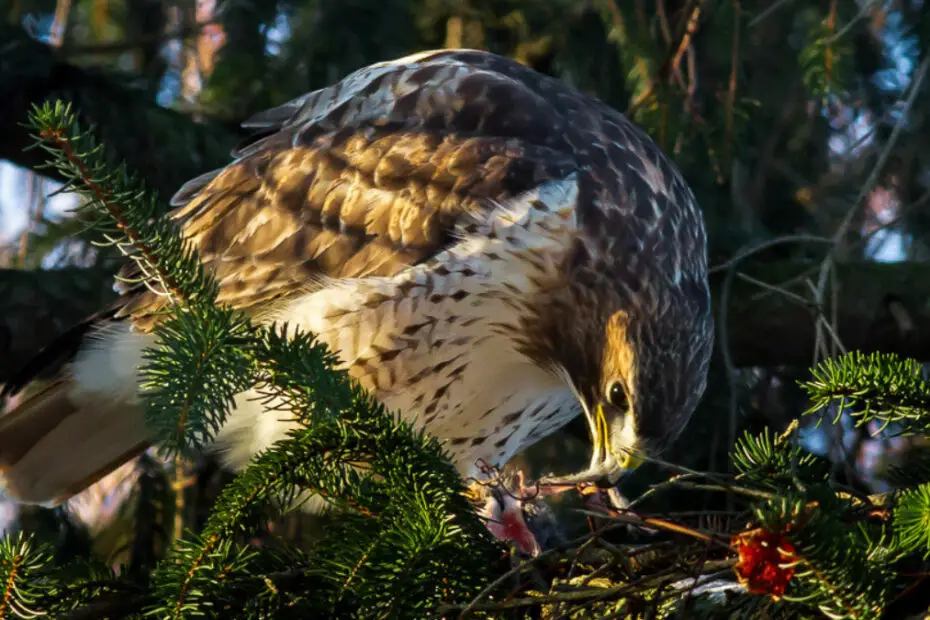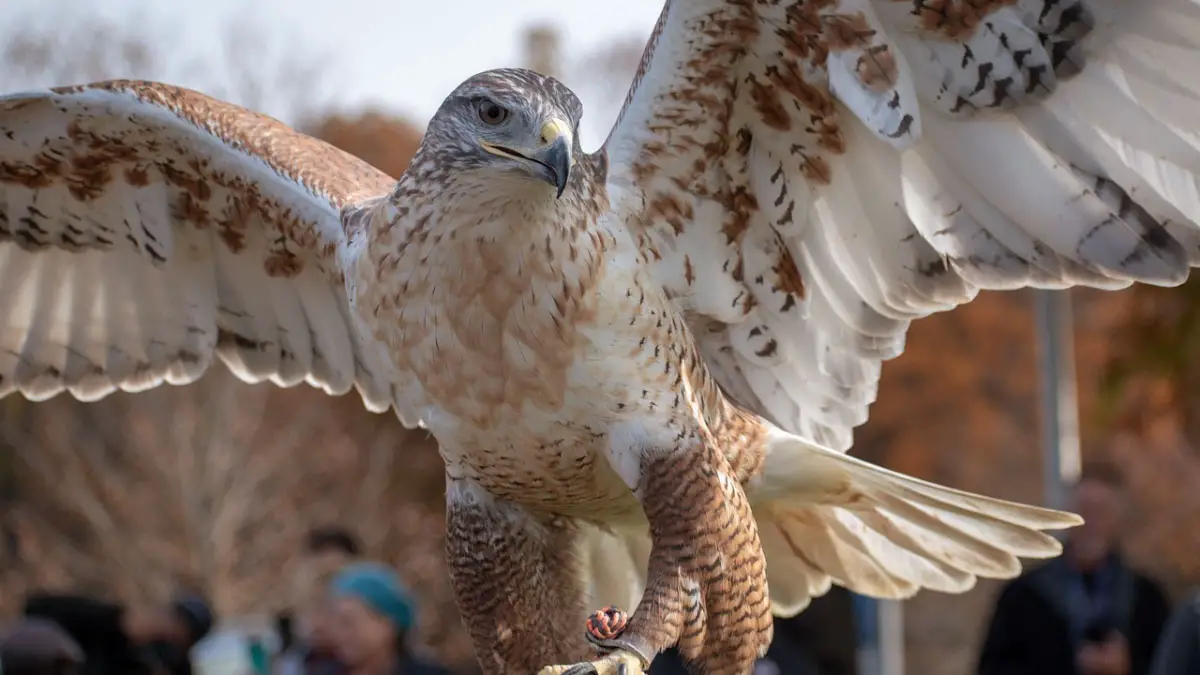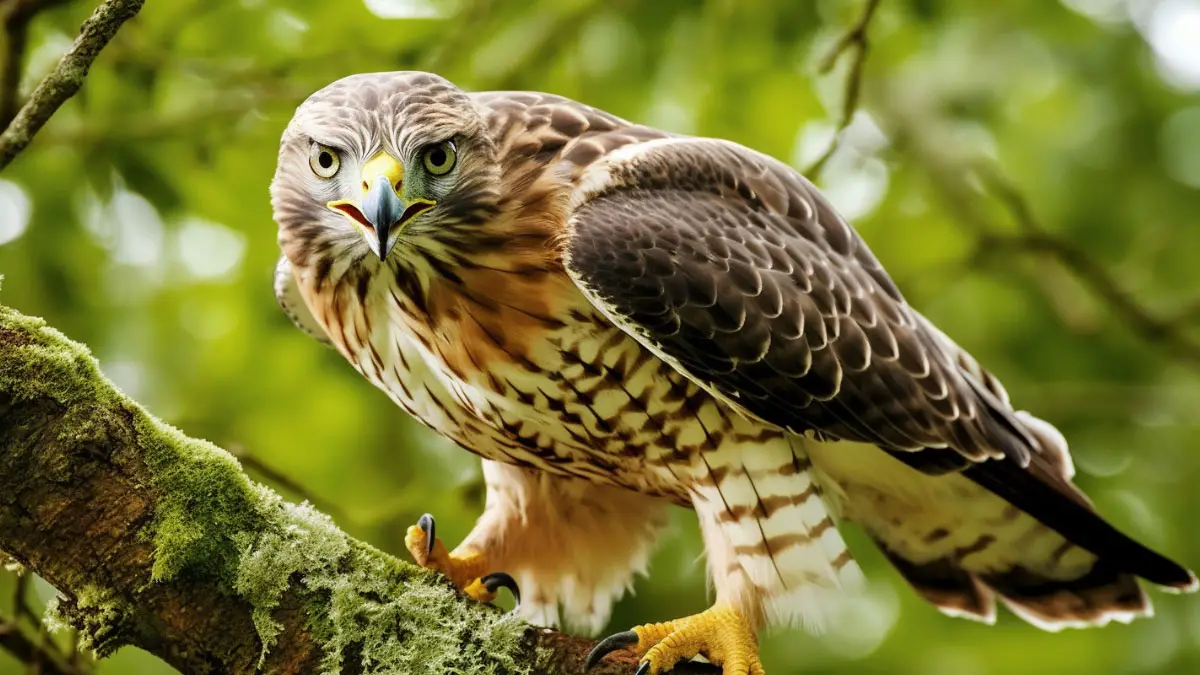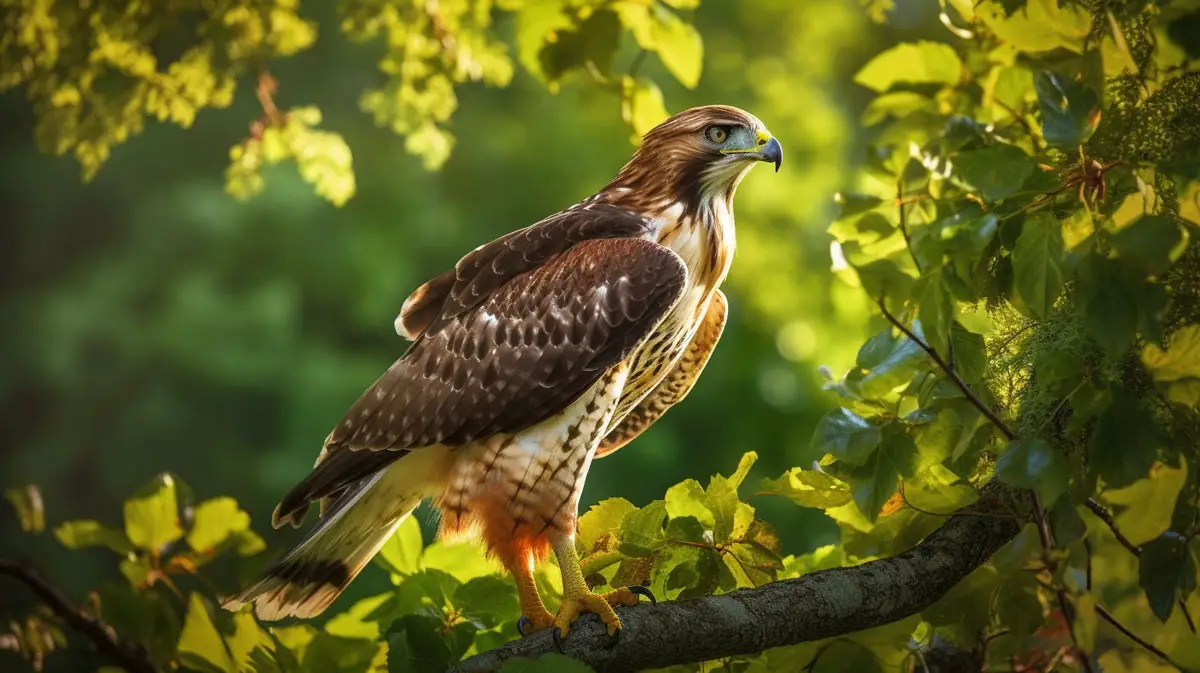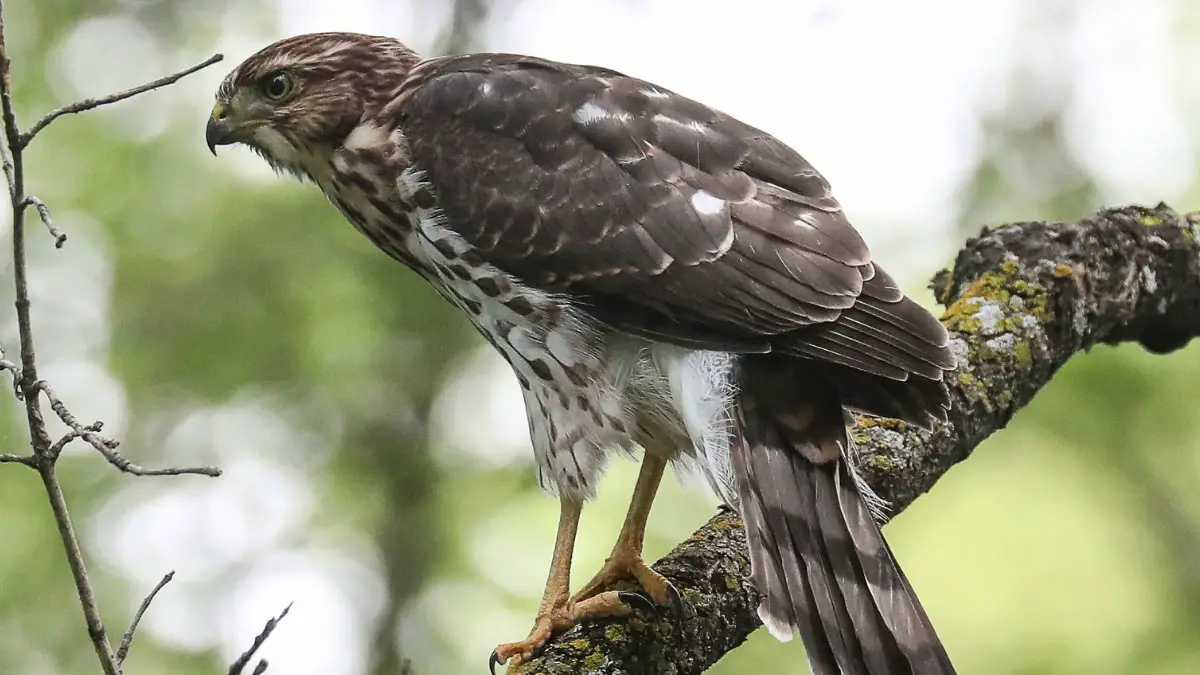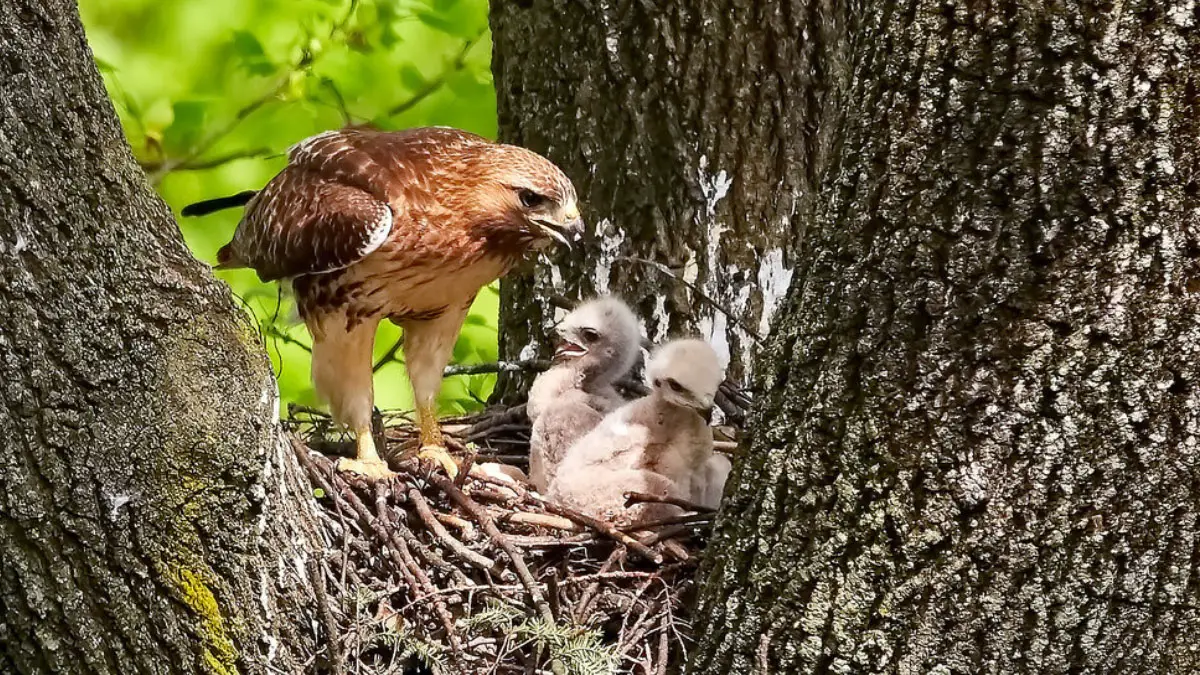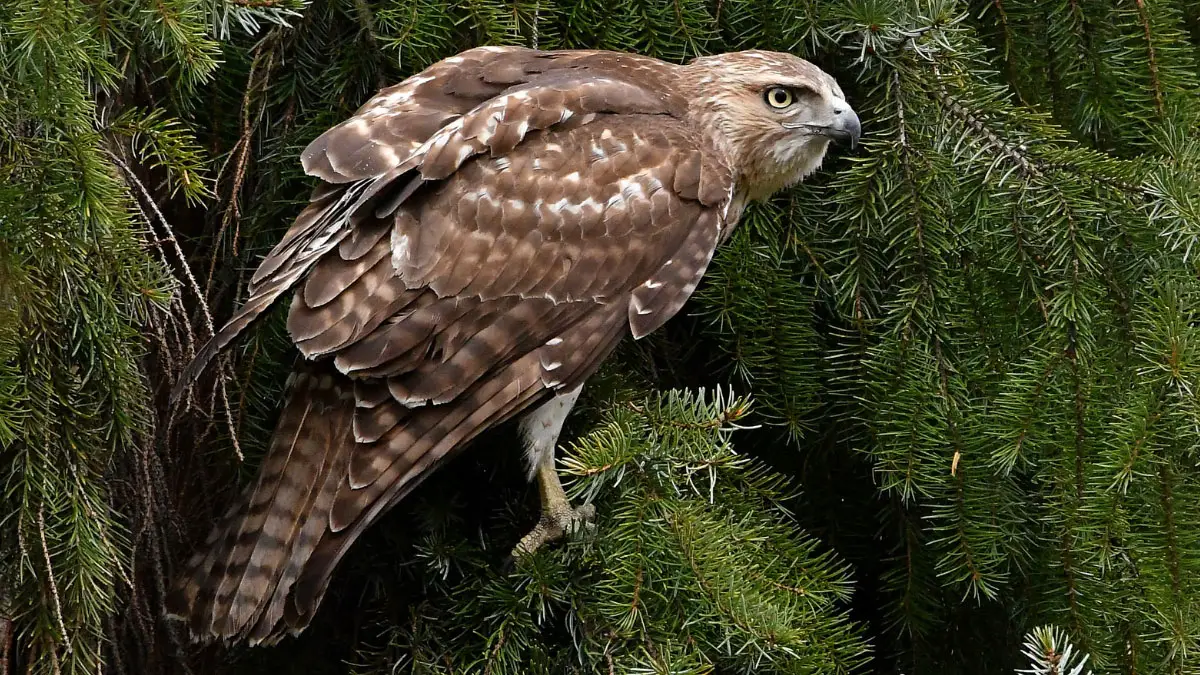Hawks are enticing creatures that are a symbol of bravery and courage. With their razor-sharp spurs, majestic wings, and keen eyesight, these birds of prey have a decent place among wild hunters. Not only that but they are also vital for ecosystem balance.
They prey on rodents and other small birds and animals so they keep their population in balance. Despite such importance for ecosystem balance, many hawks species are considered endangered.
But why are hawks endangered? There are different reasons, such as they are threatened by habitat loss, hunting, trapping, environmental toxins, and other human activities.
But regardless of this, people worldwide are making conservation efforts to protect these mighty birds and their habitats. This article will provide a detailed insight into why hawks are encountering threats in today’s world. What conservation effort can we do to protect endangered hawks species? So let’s get down to it:
Hawk Population Decline: Causes and Effects
Do you know that a 2018 study revealed that 52% of the raptor species are declining, including Hawks? Moreover, 18% of them are classified as threatened. This study made quite a stir among bird enthusiasts since these figures are whooping. But what are the grounding factors for this?
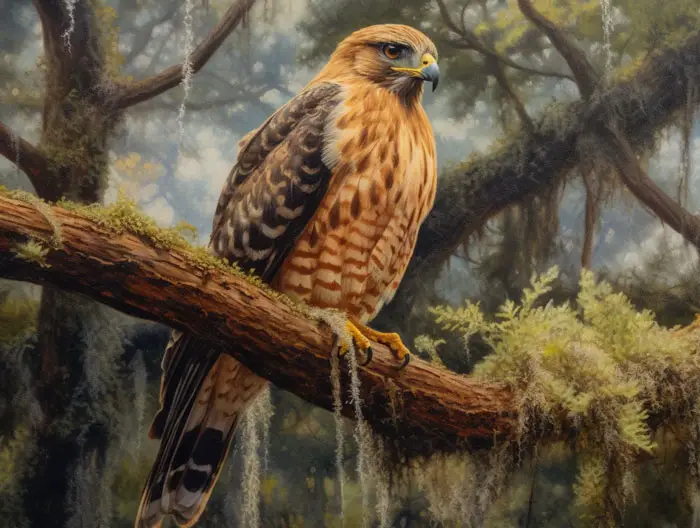
Below are the causes and effects of hawk population decline.
Habitat Loss
Habitat loss is one of the biggest culprits behind the hawk population decline. Since the hawk’s habitat is where they breed and raise offspring, they can’t do it if they don’t have a safe haven.
You might already know that hawks are introverts and need a significant area of forests, grasslands, and wetlands. They need them to hunt, breed, and raise their young, where they are far from noise and disturbance.
Hawks started to face population decline when humans expanded agriculture and started to cut forests. This habitat fragmentation led hawks to problems like food scarcity, competition with other predators, and fewer nesting sites. All these environmental degradation factors steered the hawk’s population decline.
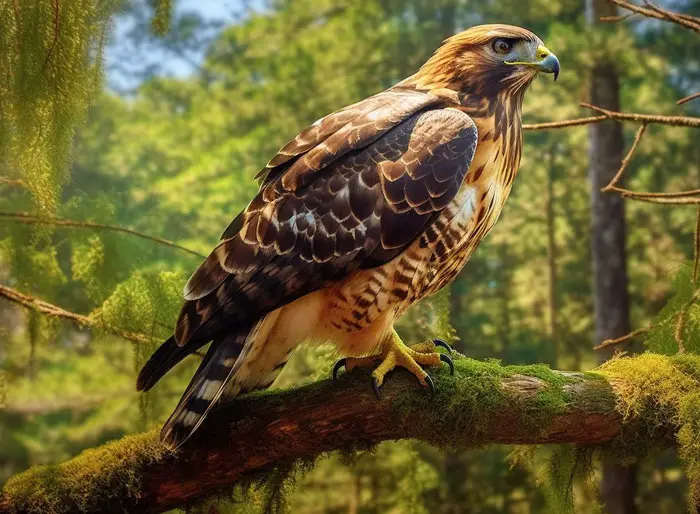
Hunting and Trapping:
As with many other bird species, hawks are also eye-catchers of many bird lovers. Their feathers are precious and leveraged for sports, so they are more susceptible to hunting and trapping.
For instance, red-tailed and cooper’s hawks have precious feathers that many seek for traditional purposes or fashion. Moreover, hawks are also hunted for their meat. Hunting of hawks is more prevalent where there is no fixed hunting regulation. All these factors contribute to their population decline and endangerment.
Collisions with Structures
While you might think the structures do not play a part in Hawks endangerment, they significantly affect it. How? Hawks are mighty birds that fly up high. And ever since humans started to expand urbanization, the towering buildings are skyscrapers getting more crowded.
Now when hawks fly up high, they mistake the glasses of the building for the open space and collide with it. Moreover, hawks migrate to unfamiliar places, and when they do so, they get their head into a skyscraper resulting in injury or death.
Furthermore, the power lines are also difficult to see until it’s too late for hawks to observe them. They get entangled into the powerlines or get struck with poles. So the towering structures are also a reason for hawks’ endangerment.
Climate Change
Climate change is also affecting the living space and food bases of many species of hawks. How? Let’s clear it up with an example.
Hawks feed on rodents and other prey animals like marmots. But during winters, when the weather is harsh, most rodents hibernate in their covert places.
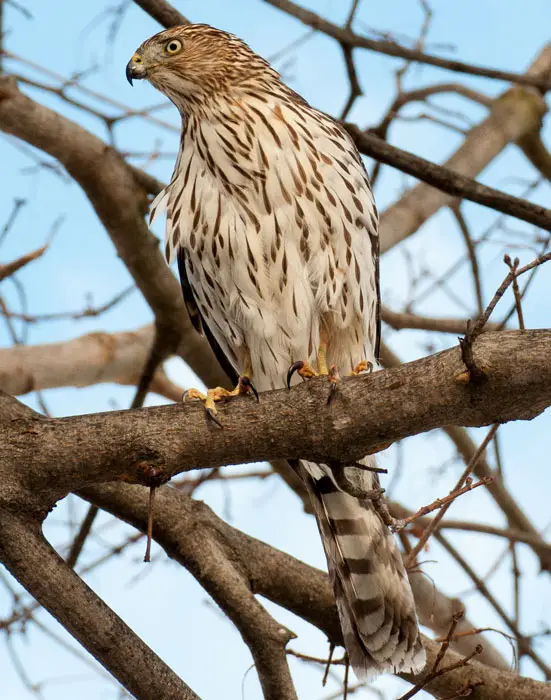
When the weather pattern changes, the rodents hibernate before their actual hibernation period. Result? Hawks find it difficult to get food to survive, particularly for young hawks. It is difficult to cope with prey base changes.
Not only that, but climate change also takes a toll on hawks nesting and roosting places. Since forest and green reduction is the major reason for climate shift, with minimum trees and structures, hawks find it difficult to nest and roost. And when hawks don’t have a safe and undisturbed nest, they will not achieve reproductive success.
Exposure to Toxins
Do you know that in 1970, the peregrine falcon was nearly extinct due to exposure to DDT (Dichlorodiphenyltrichloroethane) used in insecticides? Toxins in pesticides are a significant risk to birds since they are frequently used in agriculture and can accumulate in the food chain.
With such toxin exposures, hawks run into health problems such as poor reproduction, nervous system damage, and their immune system. This makes toxins another reason for hawks’ endangerment.
Effects of Hawk Population Decline
So you see, there are many contributing factors for hawks’ endangerment, but how will this hawk population decline affect humans? Here is how:
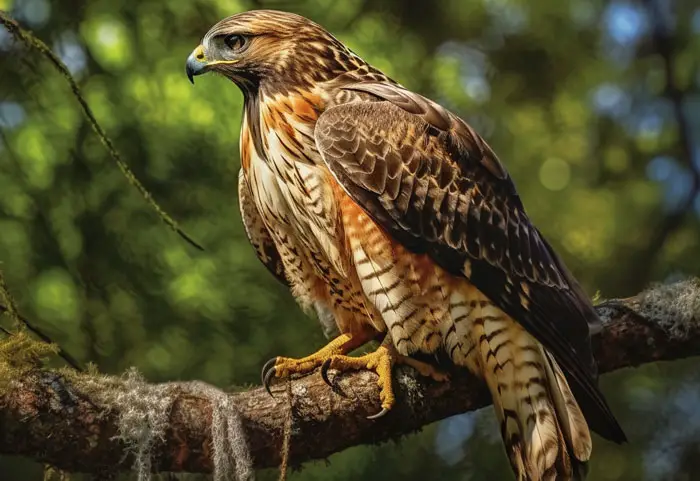
- Ecological Imbalance: Since hawks prey on other pests and animals, they play a crucial role in their ecosystem’s restoration. In fact, being top predators, hawks help control other animal populations.
So you can understand that if the hawk’s population declines, the population of other animals, such as rats, marmots, and other rodents, will increase, leading to imbalances in the ecosystem.
- Economic Impact: As we mentioned, hawks are predators, and many agricultural areas depend on hawks for pest control and crop safety. But, if the hawk’s population declines, it will lead to crop damage and decreased yields due to rodents and pest infestation. Moreover, hawks are also a tourist attraction for man, and their population decline can harm the local tourist economy.
Conservation Efforts for Hawks
With modern-era problems like habitat loss, hunting, climate change, and toxins like pesticides, hawks now have difficulty breeding, so their population is declining.
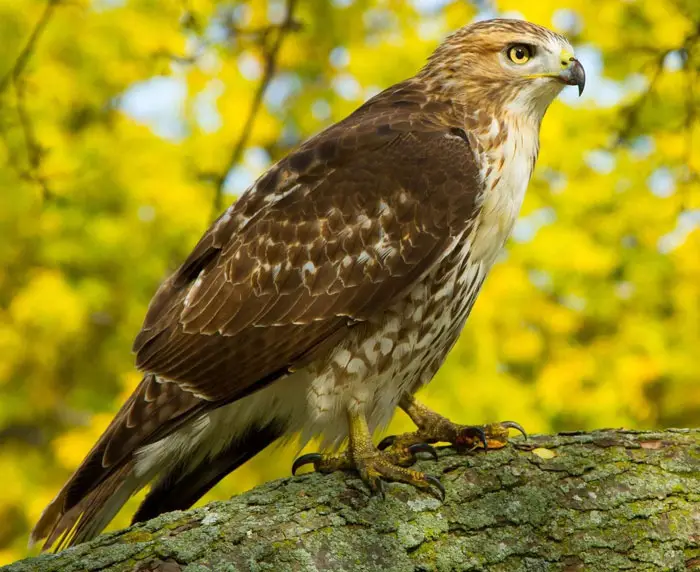
So we need to conservation efforts for hawks to protect these birds and their habitats and ensure they survive for our generations. But what can be done to protect hawks? Here is how to do it!
Hunting and Trapping Regulations:
Enforcing hunting and trapping regulations can lend a hand to help reduce the illegal collecting and killing of hawks. With rules and regulations, legislative bodies set a thoughtful limit on hunting the hawks.
Moreover, rules and regulations also entail a sustainable environment for hunting and trapping.
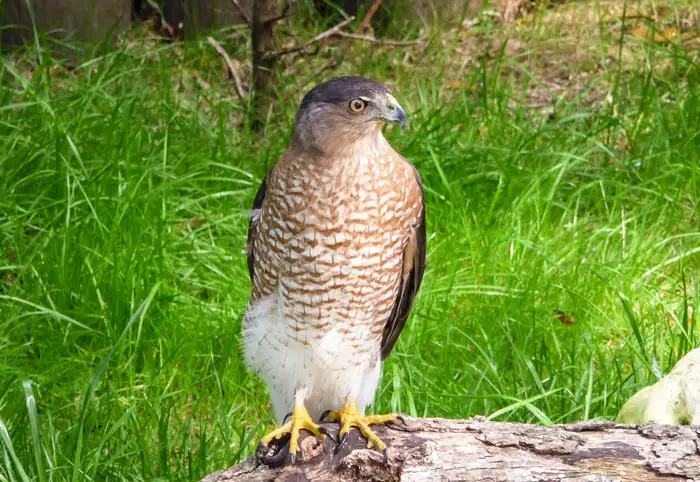
Hunting and trapping rules are handy in two ways:
- First, they prevent hawk species from overexploitation. As we mentioned earlier, the hawks are hunted down for their feathers, meat, and sports. Regulations must be implemented by the regulation enforcement legal bodies to ensure that these activities do not lead to hawk population decline.
- Second, these regulations also save birds from unintentional hunting. For instance, laws will decide how you can set up a trap for a bear so that you don’t risk the life of the bird species. You can protect your target species, birds, and hawks from unintentionally hurting with laws and rules.
Here are some of the general rules regarding hunting and trapping in the US:
- Hunting Licenses and permits: If you want to indulge in hunting and trapping endeavors in the US, you must get a state-issued hunting or trapping license and any necessary permits for specific species or locations. Moreover, you should also need to fit the Federal Migratory Bird Regulations.
- Bag limits and seasons: You are also entitled to follow the bag limits, which means how many animals you can harvest in a single hunting season. States defines this limit, and it varies from species to species. For instance, in Texas, you cannot hunt more than 4 white-tailed beers in the general season.
- Protected species: State agencies have the upper hand over federal regulation regarding endangered species. For instance, if federal law allows the endangered hawk species hunting, local or state agencies can ban it outright. Moreover, you cannot hunt or trap endangered species as per the Endangered Species Act.
- Hunting methods: Hunting methods are also regulated as you cannot use poisoned arrows or blades for hunting. Moreover, you are also prohibited from baiting, using dogs, and certain types of weapons or ammunition for hunting and trapping.
- Trapping methods: Using leg-hold traps, snare traps, or certain poisons are also banned outright. Moreover, you are not allowed to drink alcoholic beverages while hunting.
- Federal lands: Hunting and trapping on federal lands is generally regulated by the U.S. Fish and Wildlife Service, National Park Service, or Bureau of Land Management. Moreover, these agencies may have extra rules and regulations beyond state laws.
Know that hunting and trapping regulations are different for every state and species, so it is good to glance at the relevant state wildlife agency for specific rules and requirements whenever you plan to hunt.
Power Line Mitigation
Power line collisions and wire entangling constitute a significant issue behind the decline in the hawk population. But if we install bird-safe power lines or retrofit the old poles and lines with bird diverters, we can minimize the risk of hawk population endangerment.
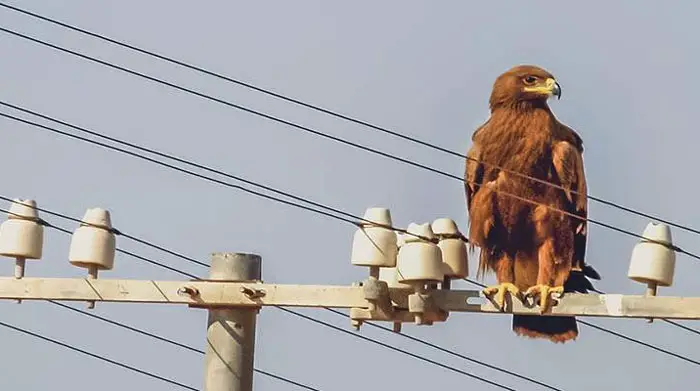
Habitat Protection and Restoration
As we mentioned earlier, hawks need a lot of space to breed and thrive, but with ongoing urbanization, their habitat is declining at an alarming rate. So for that, we need to conserve their habitat and ensure they have access to the resources they need to thrive.
But how can we do habitat protection? Here is how:
Habitat Protection
Hawks need quiet space to breed and raise offspring. Making protected spaces like nature reserve lands, wildlife parks, and national parks can significantly help.
These places are intended solely for the hawk’s reservation and are fitted with all the resources that hawks need to survive, such as prey availability, water, and vegetation.
Besides that, landowners and communities should be guided to endorse ecological land-use practices that back healthy hawk populations. For example, they can reduce the use of pesticides in plantations. Moreover, they can also plant native vegetation and preserve natural habitats.
Restoring Damaged Habitats
Habitat restoration also implies rebuilding what was taken from the hawks, their Greenlands. We can restore the hawk habitat by reforestation, restoring the wetlands, and eradicating any hawk-dominant species. While reforesting will be intended for the hawks, it will help ecology.
Monitoring and Research
Monitoring and research are essential to restore the hawk population. With studies and research, experts can make adequate plans and strategies to protect these precious creatures. Moreover, scientists and conservation organizations work collectively to achieve the hawk population rise. They assess and track hawks by different methods, such as banding, radio tracking, and satellite tracking.
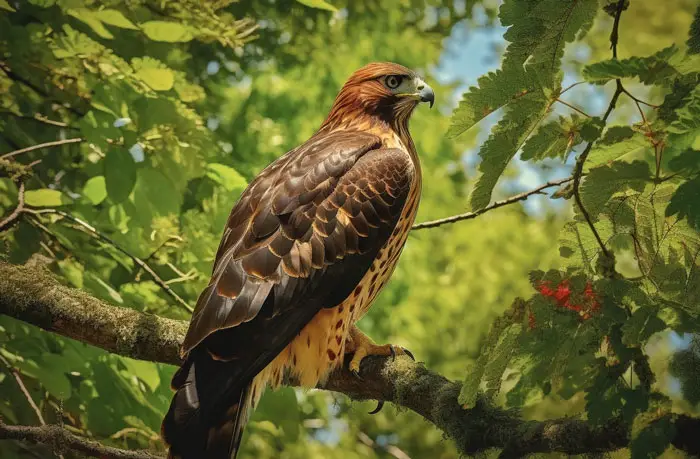
By understanding their behaviors, bird migration patterns, and habitat choices, conservation organizations such as International Union for Conservation of Nature (IUCN) can devise a plan that goes hand in hand with their habits.
But all these need extensive research. For example, DDT was studied thoroughly before the verdict that it affected the hawk population. And when DDT was entitled to species endangerment, scientists began to create other pest control alternatives that were less damaging to wildlife.
Moreover, studies of habitat fragmentation effects also lend an excellent hand for habitat restoration initiatives and informing land-use regulations for the hawk population.
Captive Breeding and Reintroduction
Captive breeding and reintroduction programs are another essential conservation tactic for hawks. But what is captive breeding?
The breeding programs have one sole purpose: multiplying the hawk population by breeding and raising them in captivity and then releasing them into the wild to thrive and multiply. For endangered species at risk of vanishing from the world, this is a real gift.
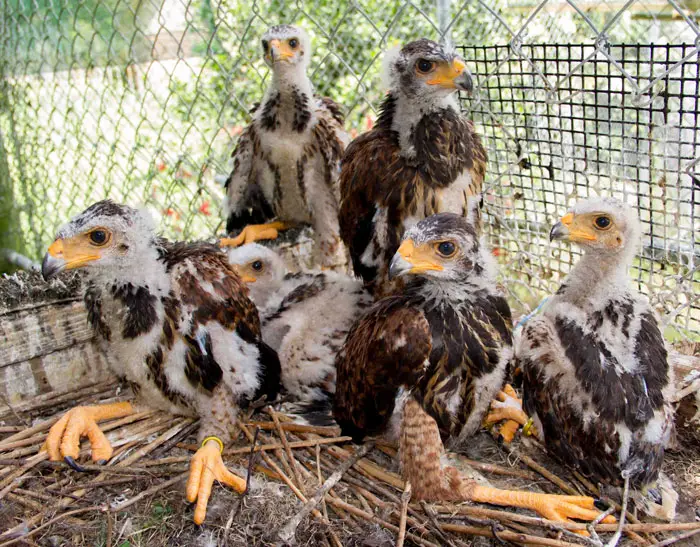
For instance, captive breeding helped the Mauritius kestrel in the 1970s when it was about to vanish. With only four of the birds in 1970, the government wildlife protection agencies like Zoological Society of London, Mauritian Wildlife Foundation (MWF), and Durrell Wildlife Conservation Trust restored them to over 400 birds in the wild today.
They achieved it by making an effective breeding program, and for the coming decades, they freed hundreds of Mauritius kestrel birds into the wild. With the help of captive breeding facilities and an effective strategy, today Mauritius kestrel population has rallied and is no longer endangered.
Education and Outreach
Conservation organizations like World Wildlife Fund (WWF), Conservation International (CI), and Wildlife Conservation Society (WCS) are trying to restore the endangered hawk species. But with education and outreach, this process can be ramped up.
With education, we can bring awareness to people regarding how important hawks are for the ecosystem and what problems they are encountering due to us humans.
In fact, conservation organizations and government wildlife protection agencies such as International Union for Conservation of Nature (IUCN) can support conservation efforts by educating and inspiring them to protect them.
Education and outreach can be done in different ways. For example, distributing educational content like brochures, posters, and videos depicting the hawk’s importance in ecology and the threats they encounter can help a lot.
Moreover, working with educational institutes and communities to encourage hawk protection and reservation can also help.
Species Spotlight: Endangered Hawks
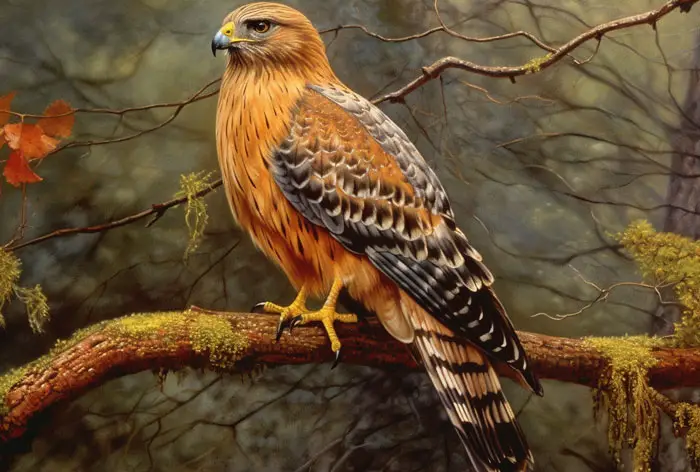
Hawks are grand birds of prey with an important ecosystem restoration part. But unfortunately, many species of hawks are endangered or threatened. Here are some of the hawk species that are endangered.
Philippine Eagle (Nisaetus philippensis)
Philippine Eagle is one of the most endangered species found only in the Philippines. Note that this bird is the largest of eagles species and is Monkey-eating Eagle due to its preying on macaques and small primates.
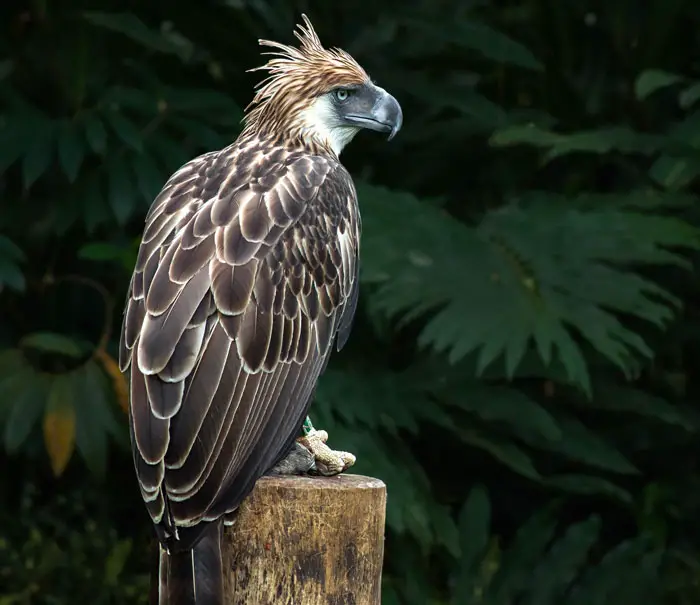
Moreover, its wingspan is up to 7 feet. The Greenlands and rainforest of the Philippines are their habitats. And since these are gigantic birds, they need large areas of intact forest for survival. Due to expanding urbanization, hunting, and trapping, the Philippine Eagle is critically endangered.
Madagascar Fish Eagle (Haliaeetus vociferoides)
Madagascar Fish Eagle is also an endangered eagle-hawk species. Inhabitants of only Madagascar island, it is one of the rarest raptors. As the name suggests, the Madagascar Fish Eagle is a fish-eating hawk.
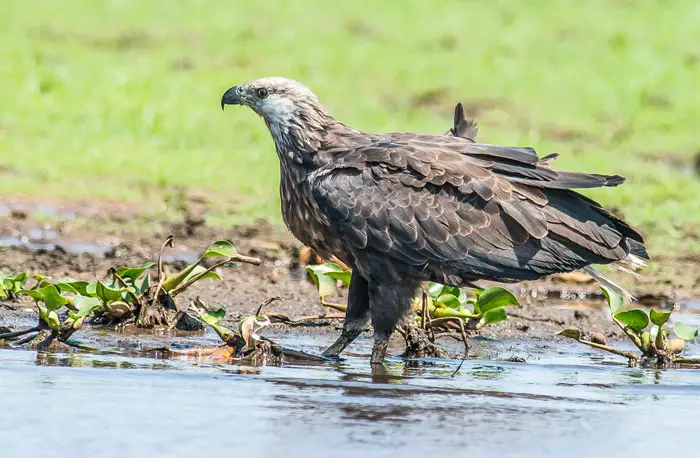
Likewise, they live near freshwater rivers and lakes in Madagascar. Since these birds have unique white heads and neck feathers, they have more visual appeal to bird enthusiasts. And that’s why they are endangered due to hunting and habitat loss.
White-rumped Vulture (Gyps bengalensis)
The White-rumped vultures are also endangered hawk species. These South Asian birds are scavengers that feed on carrion. Since White-rumped vultures remove animal carcasses from the surroundings and reduce the risk of spreading diseases, they play an important part in our ecosystem.
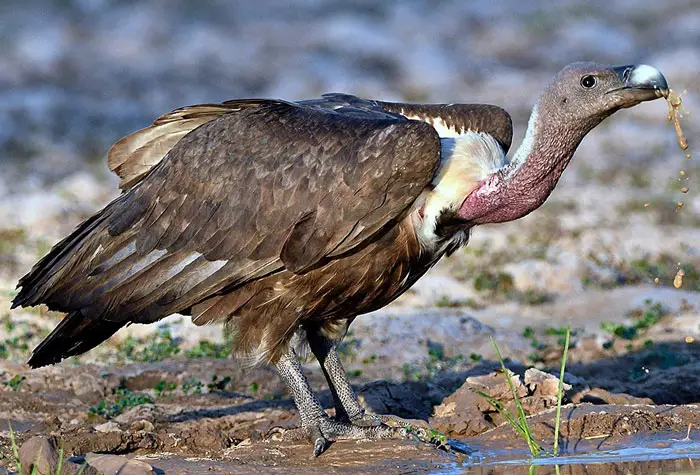
But in recent years, the White-rumped Vulture population declined drastically. Some estimates suggest that populations have decreased by up to 99%. There are many reasons behind this decline, such as habitat loss, hunting, and the use of diclofenac, a veterinary drug that is toxic to vultures.
Hawaiian Hawk (Buteo solitarius)
Hawaiin Hawk, aka Io Found only in Hawaii, this hawk species is also extremely endangered. This hawk is medium-sized and loves to prey on small birds, rodents, and insects.
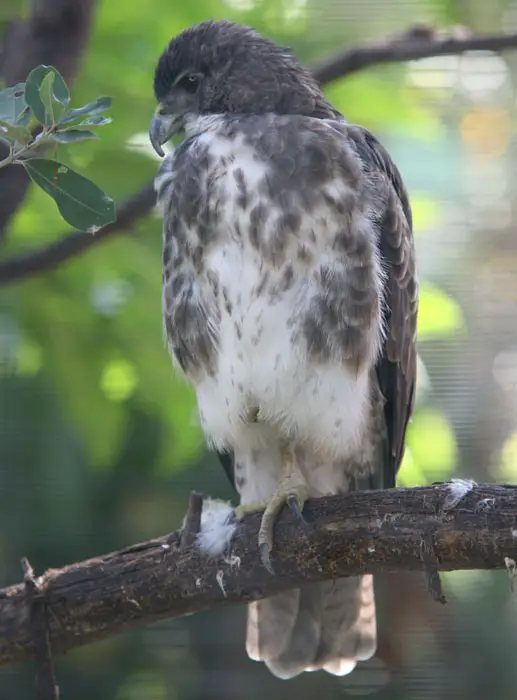
Not only the Hawaiian Hawk is important for the region’s ecology, but also it has a decent place in Hawaiian culture. But habitat loss and hunting take a toll on its populations and have declined significantly in recent years.
Conclusion
Hawks are essential for ecosystem balance, but many species face threats causing their populations to decline significantly. The general reasons for the hawk species’ decline are habitat loss, hunting, and exposure to toxins.
But hope remains intact since researchers, environmental conservationists, and different bodies are making conservation efforts. Different efforts like habitat protection and restoration, continuous research, captive breeding and reintroduction programs, and educating people help protect these gigantic birds of prey.
However, it is important for us to be mindful of protecting hawks and their endangered species particularly. We can contribute to hawk protection by supporting conservation organizations, reducing use of pesticides, and reporting any sightings of injured or distressed birds to local wildlife authorities.
Most importantly, we must not take hawks for granted since their continued decline could significantly affect ecosystems. Why? Because these birds play an essential part in controlling rodent populations and maintaining the balance of ecosystems. So significant hawk population decline could lead to an overpopulation of rodents, which threatens crops and our structures.
In a nutshell, the conservation of hawks is essential for the health and balance of ecosystems.
